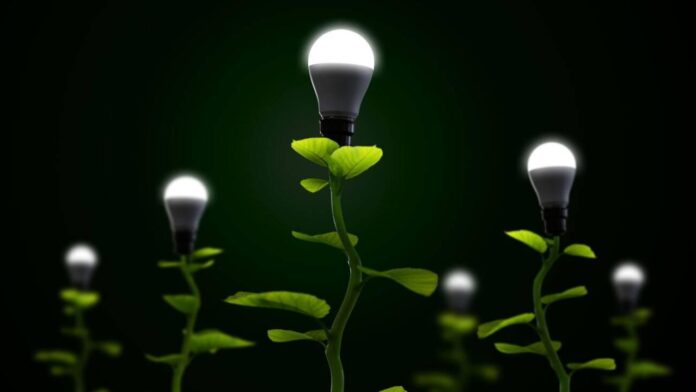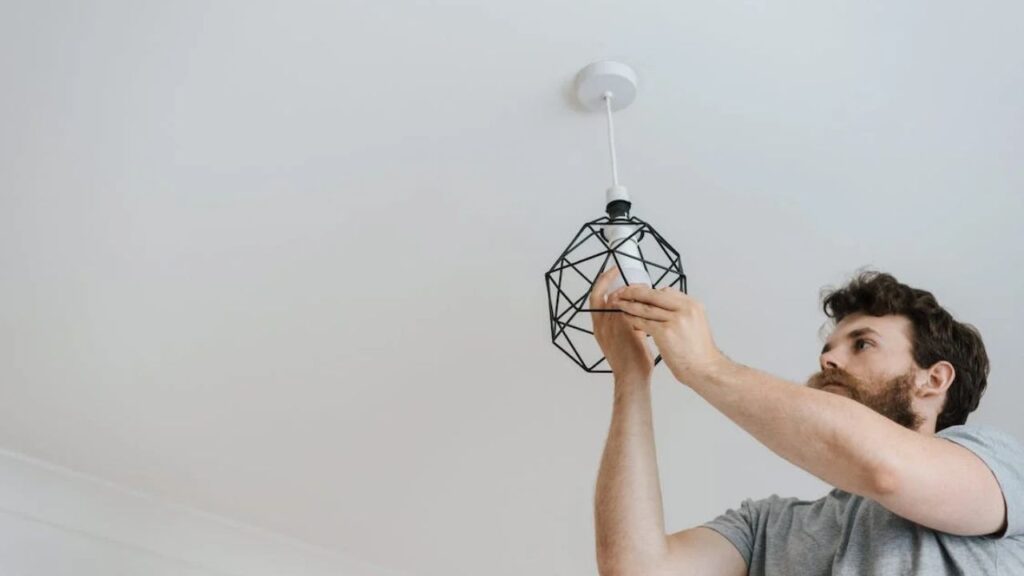Lighting accounts for 15% of global electricity consumption. As energy demands continue to rise, implementing sustainable lighting solutions is crucial for reducing environmental impact. This article explores the latest advancements in making lighting greener in 2024 and beyond.
Embracing sustainable lighting helps preserve resources for future generations. Read on to learn what the future holds in 2024 and how lighting will become more energy-efficient.
The Growing Need for Sustainable Lighting
With climate change accelerating, governments and consumers alike seek greener technologies, including lighting, which comprises a significant portion of energy use. Sustainable lighting solutions are critical for organizations and individuals wanting to reduce their carbon footprint.
Some key facts demonstrating the need for energy-efficient lighting:
- Lighting generates over 2,000 million tons of CO2 emissions annually from electricity production.
- The US spends $75 billion a year powering lights and loses $25 billion to lighting inefficiency.
- 5% energy savings would prevent 22 million tons of CO2 emissions in the US.
Transitioning to efficient technologies like LEDs can drastically curb emissions while cutting lighting bills.
Organizations like the International Energy Agency (IEA) also report the number of lightbulbs globally rising from 8.7 billion in 2010 to over 12 billion by 2030, substantially increasing consumption.
“Adopting energy-efficient technologies is one of the most cost-effective ways to meet sustainability goals and combat climate change.” Fatih Birol, Executive Director, IEA
With lighting demand proliferating, sustainable solutions become paramount for future cost and environmental savings.
Innovations in LED Lighting Technology
Light-emitting diodes (LEDs) represent the future of sustainable lighting with unmatched efficiency and lifespans. While costly initially, widespread LED adoption continues, with costs projected to fall by 59% by 2030. Their technology and applications also continue to advance.
Efficacy Levels Approach Theoretical Limits
Today’s LED packages regularly meet efficacies over 200 lumens per watt (lm/W) thanks to innovations like transparent substrates and reflective optics. With theoretical limits estimated at around 246 lm/W, commercial products approach the brink of what LED technology can accomplish efficiency-wise.
We’ll see laboratories closing in on record luminous and electric efficacies nearing 300 lm/W. Expect commercial LEDs to trend past 240 lm/W as breakthroughs overcome technical barriers and make ultra-high light output per energy input commercially viable.
Lifespans Reaching Decades
Early LED bulbs promised lifespans of 25,000 hours, equating to over a decade of typical use. Unfortunately, few consumers realize that robust lifespan. Today’s quality LED bulbs have caught up with lofty lifespan claims thanks to:
- Durable LED chipsets using high-purity materials
- Efficient heat dissipation through advanced thermal management
- Improved power supplies with robust protections
Look for new lamps and luminaires exceeding 50,000 hours of operating life (meaning 5+ decades of use). As product testing and reporting become more accurate, LED lifespan specifications will better reflect real-world expectations.
Smart Functions and Connectivity
Basic dimmable and color-changing capabilities currently headline smart LED lighting. In 2024, expect seamless integration of lighting into smart home and building networks, including:
- Voice assistant compatibility (Siri, Alexa, etc.)
- Smartphone and tablet control apps
- Presence and ambient light sensors enable automated brightness adjustments.
- Circadian lighting features that stimulate healthy wake and sleep cycles
Network connectivity allows remote user control and innovative functionality that improves convenience, health, productivity and more.
Controls Take LED Smart Lighting Further
Lighting controls add physical interfaces and network connectivity, enabling automation and data-informed improvements. Controls paired with LED or legacy systems include:
Wireless Light Switches
Wireless switches eliminate the need to wire switch locations during new construction or remodels. They come in convenient plug-in or battery-powered modules and pair with compatible smart bulb systems. Some models even stick to walls for fuss-free switching.
Occupancy/Vacancy Sensors
Occupancy/vacancy sensors automatically turn lights on or off based on detecting people within a space using motion or body heat. Great for infrequently occupied locations.
Daylight Harvesting
Daylight harvesting employs photosensors that detect ample ambient light, signaling a networked lighting system to automatically dim electrical sources to maintain preferred brightness as sunlight levels change. It can achieve 20–60% lighting energy savings.
Scheduling and Lighting Management Systems
Networked LED systems utilize dashboards and mobile apps, allowing intricate rules for activating, dimming, scheduling, and monitoring lighting. Building and facility managers input occupancy hours and settings to significantly trim unnecessary operating hours and power usage.
As LED controls gain smart capabilities, they enable substantial efficiency improvements beyond lamp upgrades alone.
Solar-Powered Lighting
Off-grid solar-powered lights operated by batteries continue to trend as reliable and renewable outdoor lighting solutions. Some growth figures, according to Northeast Group:
- The Middle East and Africa will remain the top regions for off-grid lighting installation, with 23 million new units in 2024.
- India’s off-grid solar market crossed $500 million in revenue in 2022.
- Global off-grid solar lighting revenue could reach $5.9 billion by 2024.
Falling prices combine with solar and battery advancements to make solar lighting affordable in developing regions lacking electrification. Brighter LEDs cut the required solar panel size to power entire small homes.
Solar lighting also appears in niche applications like:
- Decorative garden lighting
- Temporary construction site illumination
- Remote wildlife area lighting
- Disaster relief and emergency backup power
For homes and businesses near electrical infrastructure, solar generates clean energy to supplement grid-sourced lighting. And innovations like transparent solar panels and solar cladding will soon turn building facades into solar collectors.
Healthier Lighting with Natural and Circadian Solutions
Beyond energy efficiency, lighting intersects human health, agricultural yield, and overall well-being. Two emerging solutions include:
Natural Lighting
Studies confirm exposure to natural light during the day bolsters productivity and learning while reducing symptoms of SAD, insomnia, and depression. New construction installs more windows and skylights to bathe interior spaces with natural light. Natural light also saves energy by offsetting electric lighting needs.
Circadian Lighting
Circadian lighting aims to support healthy sleep and wake cycles by adjusting color temperature and intensity throughout the solar day. The correct light spectra and timing help synchronize people’s circadian rhythms to the 24-hour sun cycle for improved sleep quality and daytime alertness.
As research uncovers light exposure’s profound biological effects, human-centric approaches will shape lighting decisions for home and work environments.
Legislation Driving the Adoption of Efficient Lighting
Governments wield immense influence over energy efficiency adoption by setting performance standards and product bans. Strict 2024 policy examples include:
- EU: Phasing out halogen bulb sales
- US: 45 lumens/watt minimum standard covering ~75% bulb sales
- China: Mandatory certification for quality and efficiency
- Canada: Complete ban on inefficient incandescent bulbs
Such regulations accelerate the transition to future-proof LED lighting. In a highly cost-driven industry with long replacement cycles, legislation ensures sustained transformation.
Certification bodies like Energy Star also push efficiency with recognizable labels, helping consumers identify sustainable options without understanding lumens, wattages or lux units.
Thanks to global efforts, the days of environmentally reckless lighting are fading fast as the new energy era dawns.
Here are 20 Sustainable Lighting and Energy Solutions:
- LED Light Bulbs: LED bulbs are up to 80% more efficient than incandescents and last 25+ years.
- Smart Lighting Controls: Occupancy sensors, photocells, timers, and dimmers optimize light use.
- Daylight Harvesting Systems: Automatically dim artificial light when ample natural light exists.
- Solar-Powered Lighting: Use renewable solar energy for outdoor lighting needs.
- Natural Skylights and Light Wells: Allow natural light into building interiors to reduce electric lighting.
- Circadian Lighting Solutions: Mimic natural light color and brightness cycles to support health.
- Light Pollution Reduction: Use shielded luminaires and adaptive controls to eliminate wasteful lighting.
- Municipal LED Street Light Conversion: Cities are rapidly switching to LED technology for their streets.
- Energy Efficient Lighting Retrofits: Upgrade commercial buildings to LEDs for instant savings.
- California Title 24: Compliant Buildings: Strict Lighting Standards for Sustainable Nonresidential Spaces.
- Astronomical Timers for Outdoor Lighting: Programmed to shut off during daylight hours.
- International Dark Sky Parks: Strict outdoor lighting ordinances in protected natural parks.
- Lighting Sail Shades: sun shields with angled solar panels generating power.
- Lighting Audits and Assessments: Review lighting usage for upgrade suggestions.
- De-lamping: Remove unnecessary bulbs where ambient lighting exceeds needs.
- Luminous Efficacy Regulations: Governments are banning inefficient lighting globally.
- Commercial Lighting Retrofit Grants and Rebates. Offset upgrade costs for sustainable projects.
- Radiant Cooling Ceilings: Use chilled ceiling panels rather than air conditioning.
- Tubular Daylight Guidance Systems: Passive natural light piping into darker building cores.
- Corporate Responsible Lighting Commitments: Like Climate Group’s EP100.
Here are 15 Tips for Sustainable Lighting and Energy Solutions:
- Install LED light bulbs, which use at least 75% less energy and last 25 times longer than incandescent bulbs.
- Use occupancy sensors, dimmers, timers, and photocells to automatically turn lights on/off or dim based on occupancy and natural light.
- Open blinds and curtains to maximize daylight. Paint interior walls light colors to reflect more natural light.
- Consider solar-powered outdoor lighting, especially in remote areas without electrical access.
- Replace windows and skylights with energy-efficient models to minimize heat and cooling loss.
- Use circadian rhythm lighting mimicking the color and intensity of natural daylight to support health.
- Eliminate wasted light by shielding and directing it downward to prevent light trespass and skyglow.
- Replace old fluorescent tube lighting with LED tube lights for 60–70% energy savings.
- Conduct lighting audits to determine where inefficient lighting exists for retrofit opportunities.
- Participate in lighting retrofit rebate programs through local utilities and the government.
- Install lighting controls like occupancy sensors, centralized time clocks, and daylight harvesting technology.
- Consider radiant cooling systems using chilled ceilings rather than air conditioning to manage heat.
- De-lamp by removing unnecessary bulbs in overlit spaces.
- Follow dark-sky-friendly outdoor lighting ordinances if you live near an astronomical observatory.
- Choose Energy Star-certified fixtures that meet strict efficiency and quality guidelines.
Frequently Asked Questions
What are the key benefits of sustainable lighting solutions?
Sustainable lighting cuts energy usage and greenhouse gas emissions considerably. It also lowers utility bills for households and organizations. Additional benefits like customization, automation, and human health improvements will drive future adoption.
How much can smart lighting controls reduce energy consumption?
Studies demonstrate smart lighting controls add 20–60% additional energy savings by optimizing runtimes, occupancy and daylight harvesting. More advanced systems with real-time data analytics create opportunities for even larger reductions.
Do sustainable lighting options cost more upfront?
In most cases, the incremental upfront cost is justified by much lower long-term expenses from energy savings. Governments also offer rebates, tax credits and incentives to make sustainable options even more attractive compared to outdated technologies.
How can businesses participate in supporting sustainable lighting?
Firstly, commercial facilities can upgrade their own properties to energy-efficient options with proper lighting assessments. Secondly, organizations should educate and encourage employees to adopt sustainable solutions at home. Utilities also incentivize businesses to install efficient lighting through rebates and special programs.















![Technical Aspects of 844 Area Code in 2024 [Detail Guide] 844 Area Code](https://articleify.com/wp-content/uploads/2024/01/844-Area-Code-150x150.jpg)














